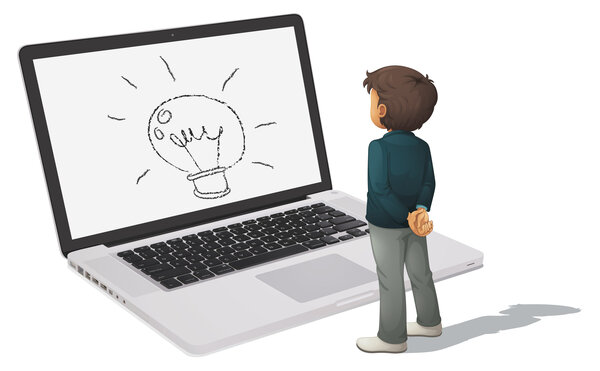Before buying a laptop, we should follow some specifications. Otherwise, it will not suit our work. When you decide you will buy a computer for your own work, then you are started to search on google the features to consider when buying a laptop. Some blogs can’t give exact information on your needs. That’s why we are here with some categories that you should look at before purchasing a laptop. Don’t be hurry. Take time before buying something. So, let’s find it together.
Getting know: The features to consider when buying a laptop

Now even thin and light laptops can handle many of the tasks that editors performed on complex and expensive equipment in a studio. So, you should seriously consider buying a laptop for video editing and the like. But what specifications to look for?
Before starting with our suggestions, remember that companies rarely make a notebook for video editing / graphics in the same way they produce. From this section you will know broadly the matter that you should consider before buying a laptop. Let’s have a look!!
Processor and RAM
The two most important components for a notebook for AutoCAD and the like are the CPU and RAM. Most petitions are optional to take advantage of modern multi-core CPUs, which means that the more cores you have, the better. Fortunately, the latest Intel Core U-series processors, designed to consume less power than their desktop counterparts, now have 4 seats. The 8th generation “Coffee Lake” mobile processors feature Hyper-Threading- enabled designs with support for 6. core and 12 threads. The principle is exact for a video editing app like Final Cut Pro and Adobe Premiere Pro.
Finding the right amount of RAM is much easier than with the processor. A good law of thumb is that you need to select the best graphics/video editing laptops with at least 16GB of RAM. For many devices, this was once the maximum limit, but now you can find some portable workstations with 32GB or more of RAM. The expense is often prohibitive, however, and we think it’s best to invest in a faster CPU.
Classic hard drive or SSD
A self-respecting video editing notebook must start up very quickly. To do this, it is very important to buy one with an internal solid-state drive (SSD), which can permit data much rapidly than the classics. Mechanical hard drives the difference in speed between an SSD, and a traditional hard drive is enormous. This does not directly affect the rendering phases, but an SSD will still offer significant speed gains on specialized tasks such as playing multiple clips at the same time or 4K movies.
Ideally, it would be a decent idea to have a large hard drive alongside the SSD. But it’s ultimately more convenient to make sure your laptop has a Thunderbolt 3 port to connect an external hard drive to store most of your footage. That said, some workstations may offer two drives (an SSD boot drive, as well as a spacious hard drive), without the hassle of having external drives to carry around.
Display
Nowadays, with even $ 400 notebooks offering at least Full HD resolution, the main spec to be evaluated in a display should be thumb drive and not pixel count. A 15 or 17-inch display will allow a greater perception of the project, but obviously at the expense of weight and size. However, many video editing notebooks (including Dell’s XPS line) manage to pack a 13 or 14-inch screen into a chassis that would otherwise have a smaller display.
The full HD resolution can be sufficient for many tasks, but if you work with 4K shots and recordings, it would be worth buying a laptop with a 4K display. Obviously, if you need a 4K panel, make sure you can stay close to a power outlet most of the time or consider buying an external charger to use, as autonomy will certainly be very low. On the other hand, never choose a resolution below Full HD in any laptop for AutoCAD and the like.
Connectivity
If you’re already carrying tens of pounds of photographic and lighting gear, the last aspect you want is to expand weight to your bag. Fortunately, by now, many very powerful notebooks for Photoshop and the like weigh less than 3 kg. The thinnest and lightest ones don’t have dedicated GPUs or displays larger than 14 inches. Still. You may be prepared to do without these details. Especially if you have a more powerful editing station in your office where you do most of your work.
Some laptops, comprising all MacBook Pro models, only contain Thunderbolt 3, which is a radical approach as the standard is still relatively new. It would be best to have one or two Thunderbolt 3 ports and one or two USB ports (3.0 or 3.1). It is one of the most important t factor that you should look before purchasing a laptop.
Performance
In general, the performance of a notebook is analyzed based on 4 elements: RAM, processor, GPU, and memory. The CPU (central processing unit) is the main unit that conducts the most basic calculations. Basically, the processor is the thing that allows your computer to have multiple applications at the same time.
Having the best processor means faster computations which result in faster performance on all open applications.The GPU is also important but it comes into play when you work with animation and 3d modeling. The RAM (random access memory) is part of the hardware and temporarily stores for processing information.
Final word
Finally, we will suggest that before buying something must be read their configuration and their specification. Otherwise, your work doesn’t match with your buying laptops. You can follow our all instructions from our content. This will help you a lot before buying a computer. I hope you will know now about the features to consider when buying a laptop. Thanks for your concentration.